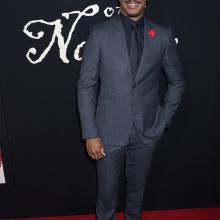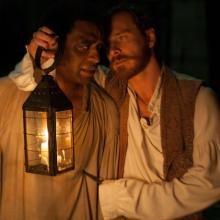steve mcqueen

Image via Ga Fullner/Shutterstock.com
I equate financially supporting The Birth of a Nation with ticket sales or a DVD purchase "because it's important" with supporting Brock Turner’s release from prison "because he’s a great swimmer and has potential." Both send a message to rape victims worldwide: They will always be ranked as lesser than their accuser, and lesser than something intangible.
Before I saw the new film 12 Years A Slave, I knew nothing about Solomon Northrop or his astounding story of courage, forbearance, and faith.
I’d never heard of Northrop, an African-American freeman, who was born and reared in upstate New York in the early 1800s, well before the abolition of slavery in the rest of the nation. I’d not known of the historical practice of kidnapping freeborn black Americans in the North and selling them into slavery in the South.
I’d never heard about how Northrop, an accomplished violinist, was bamboozled into traveling from his farm in Hebron, N.Y., where he lived a prosperous life with his wife and three children, to Washington, D.C., for work, but was drugged, kidnapped, and sold in Louisiana. I’d never heard how he remained for a dozen years before heroically regaining his freedom in 1853 — one of a very few kidnapped freemen and freewomen ever to regain their freedom.
Since the production of The Birth of a Nation, Hollywood has lived with the mythic world imagined by artists who view the lives of people of color as footnotes and props. From Gone With The Wind to Django Unchained, the most difficult type of film for Hollywood to get right is the antebellum story of people of color.
Django, for example used the archetypes designed by Hollywood — “Mammy, Coon, Tom, Buck, and Mulatto,” to quote film historian, Donald Bogle — and exploit them in order to create a hyper-exploitation Western fantasy, with slavery as the backdrop. The film is a remix and critique of exploitation clichés, not a historical drama seeking to illuminate our consciousness. Django is a form of visual entertainment where enlightenment might happen through a close reading of the film. All the archetypes remain in place. Nothing is exploded or re-imagined, only remixed to serve the present age.
Steve McQueen’s 12 Years A Slave, on the other hand, sits within and outside the Hollywood fantasy of antebellum life. I say it sits within, because the archetypes forged by the celluloid bigotry of D.W. Griffith are present. But, in the hands of the gifted auteur, Steve McQueen, they are obliterated and re-imagined as complex people caught in a system of evil constructed by the immorality of markets, betrothed to mythical, biological, white supremacy.

